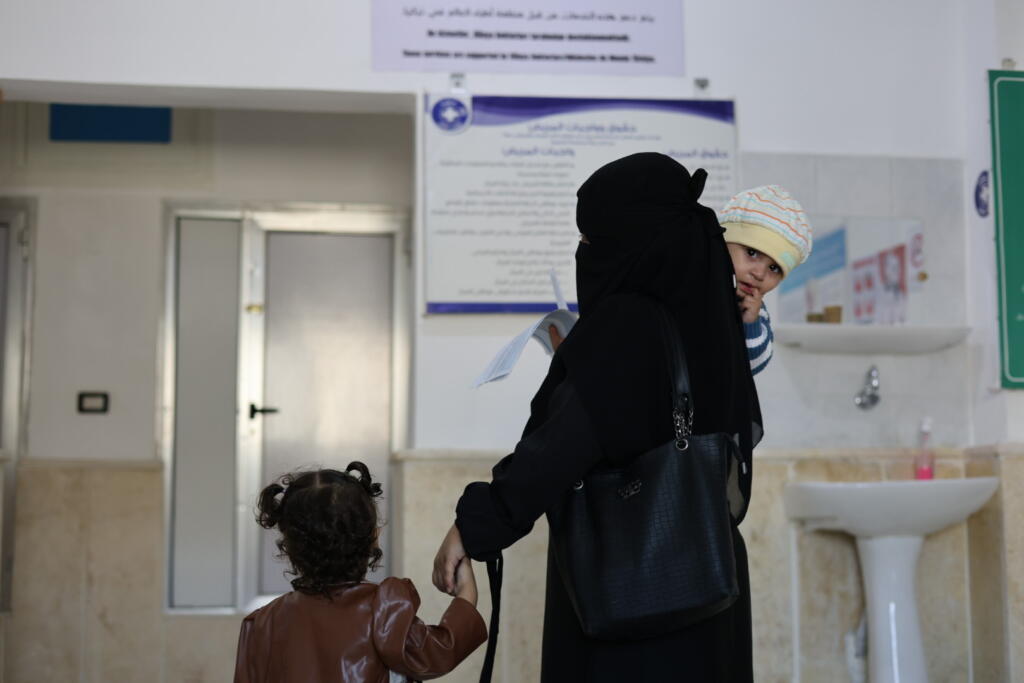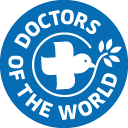
In the small town of Kafr Takharim in Northwest Syria, a clinic hums with quiet purpose: a baby’s first cry, the rhythmic beeping of a monitor, the reassuring voice of a midwife. For Ayoush Qazzeh, a 39-year-old mother of four, this place is more than a medical facility; it’s a sanctuary.
“When I walked into that clinic, I felt seen for the first time in years,” she says. “It felt like the war had taken everything, and then suddenly, someone gave something back.”
Before finding the clinic, Ayoush’s life was a silent battle for survival. A mother of four, Ayoush has weathered the years of conflict, displacement, and poverty, all while nurturing her children with the limited resources available to her.
“I don’t remember a day without worry,” she says softly. “But when you’re a mother, you learn to keep breathing, even when everything around you has stopped.”
Her youngest daughter, Warda, was born malnourished. “I would hold her all night, trying to feed her,” Ayoush remembers. “But my body had no milk left. I was starving too.”
Warda survived, barely, but the experience continues to haunt Ayoush.

“Some women walk for hours to reach us,” says Dr. Lina Al-Hassan, Doctors of the World’s SRH Coordinator in Idlib. “They come carrying trauma, fear, and silence. We offer care, but we also offer listening. That’s what healing begins with.”
A Safe Haven for Women’s Health
Everything changed the day Ayoush heard about a new primary health care center in her town, operated by the Turkish chapter of Doctors of the World. The center had a sexual and reproductive health (SRH) unit that provided maternal care, family planning services, and counseling.
There, she met Fatima, a community health worker who visits women’s homes to offer prenatal check-ups, breastfeeding support, and health education.
“When I first met Ayoush, she was exhausted, but determined,” Fatima recalls. “She had survived four pregnancies without care. I told her, ‘You don’t have to do this alone anymore.’”
In northwest Syria, clinics like these are more than medical facilities. They are sanctuaries of safety and dignity for the Syrian people. Years of bombardment and siege have displaced 3.4 million people in the region and destroyed hospitals, homes, schools, and other key infrastructure. In 2025, more than 16.5 million people in Syria require humanitarian assistance. Much of the population now faces intermittent electricity, unsafe water, and economic scarcity.

For women, the struggle runs deeper. Many lack access to essential reproductive and maternal care, and social norms often prevent them from traveling alone or seeing a male doctor, leaving many to delay care. Limited opportunities to earn an income make it hard to afford or access healthcare. With children or elders to care for, traveling long distances to clinics is often impossible. Ongoing conflict, insecurity, and lack of reliable transportation options deepen their isolation from services they desperately need.
For patients like Ayoush, the clinic is more than a place for care; it’s a place of solidarity.
“When I see other mothers in the waiting room, I realize we all carry the same pain,” she says. “But here, we also share strength.”

The Bigger Picture: Syria’s Long Road to Recovery
Across Syria, the health system remains on life support. Maternal and newborn care is at crisis levels. Many doctors have fled, and those who remain earn less than $40 a month. Women often give birth at home, alone, without sterile equipment or trained support.
Yet amid this collapse, Doctors of the World sustains a lifeline:
- Operating 10 health centers in Aleppo and Idlib that provide maternal, newborn, and reproductive health services;
- Training female community health workers (83% of staff) to reach mothers in isolated or unsafe areas;
- Providing mental health and psychosocial support through female counselors and psychologists;
- Supporting Syrian midwives with continuous training and supplies;
- Conducting cross-border assessments to advocate for stronger maternal health systems.
Doctors of the World takes a holistic approach to women’s health, integrating mental health and psychosocial support alongside primary and SRH care. Staff are trained in gender sensitivity and trauma-informed practices to ensure compassionate, respectful care for every woman.
Last year alone, 39,000 Syrians — 60% women and girls — received care through DotW-operated clinics.
Women’s Health: A Cornerstone of Resilience
Conflict can upend families and strain women as caregivers. Investing in women’s health—especially reproductive, maternal, and mental health—helps them heal, rebuild stability, and drive community recovery.
“Every safe delivery, every child fed, every woman who smiles again…That’s how recovery begins,” says Fatima, who continues to walk from house to house under the Idlib sun. “We are not just rebuilding hospitals. We are rebuilding hope for the people of Syria who have been suffering from the scars of a 13-year brutal war.”
Syria’s recovery is still fragile. Without sustained international funding, clinics in the region could close their doors once again, cutting off the only safe space thousands of women have. The World Bank estimates it will cost $216 billion to rebuild Syria, yet with massive cuts to international aid funding, it is unlikely such an amount will be reached.
“If this clinic disappears,” Ayoush says, “it’s not just a building we lose. It’s our chance to live.”
From the rubble of war, women like Ayoush are proving that healing is possible: one birth, one breath, one act of care at a time.
“We cannot rebuild Syria without rebuilding its women,” Dr. Al-Hassan concludes. “And that begins with keeping every safe space for care open.”
By sustaining maternal and reproductive health programs in Syria, we ensure that women like Ayoush and thousands more can access health care, safety, and dignity. Because recovery is not only about rebuilding walls, it’s about rebuilding lives.

This story is part of Safe Spaces for Care, Doctors of the World USA’s year-end campaign highlighting frontline voices at the heart of crisis and displacement. Through mobile clinics, local partnerships, and global advocacy, Doctors of the World creates safe spaces where families can find healing and be seen—wherever they are. These lifelines rely on continued support in the U.S. and around the world to ensure access to care for those who need it most.

